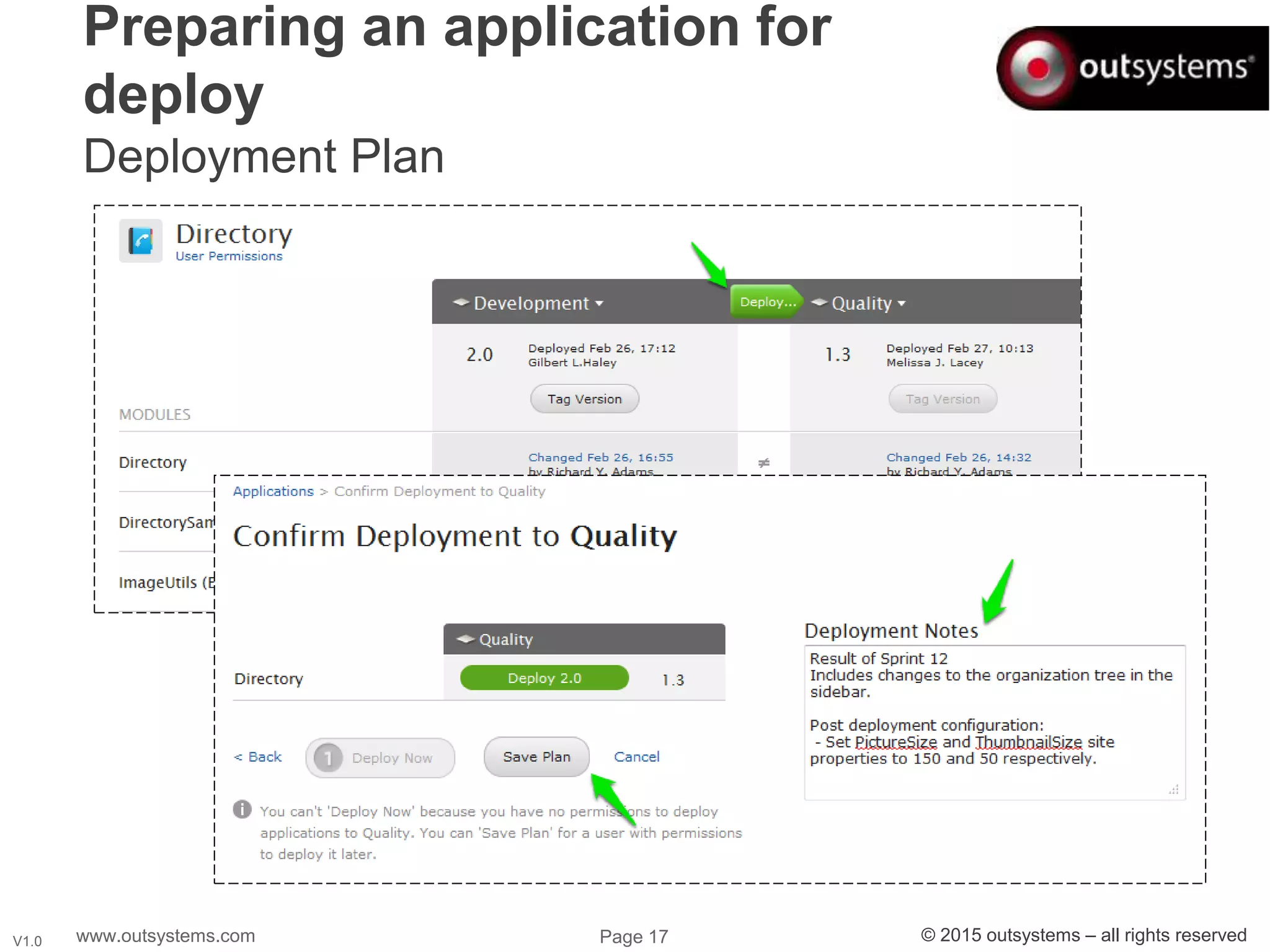The document describes the OutSystems Application Lifetime Management tool called Lifetime. Lifetime provides a centralized management console that gives visibility into all environments on an OutSystems platform. It manages application deployments, users, security, and orchestration across environments. Lifetime analyzes application dependencies and helps users deploy applications by resolving any issues detected. It also provides performance monitoring, custom plugin support, and manages infrastructure security through role-based permissions across all environments.



































